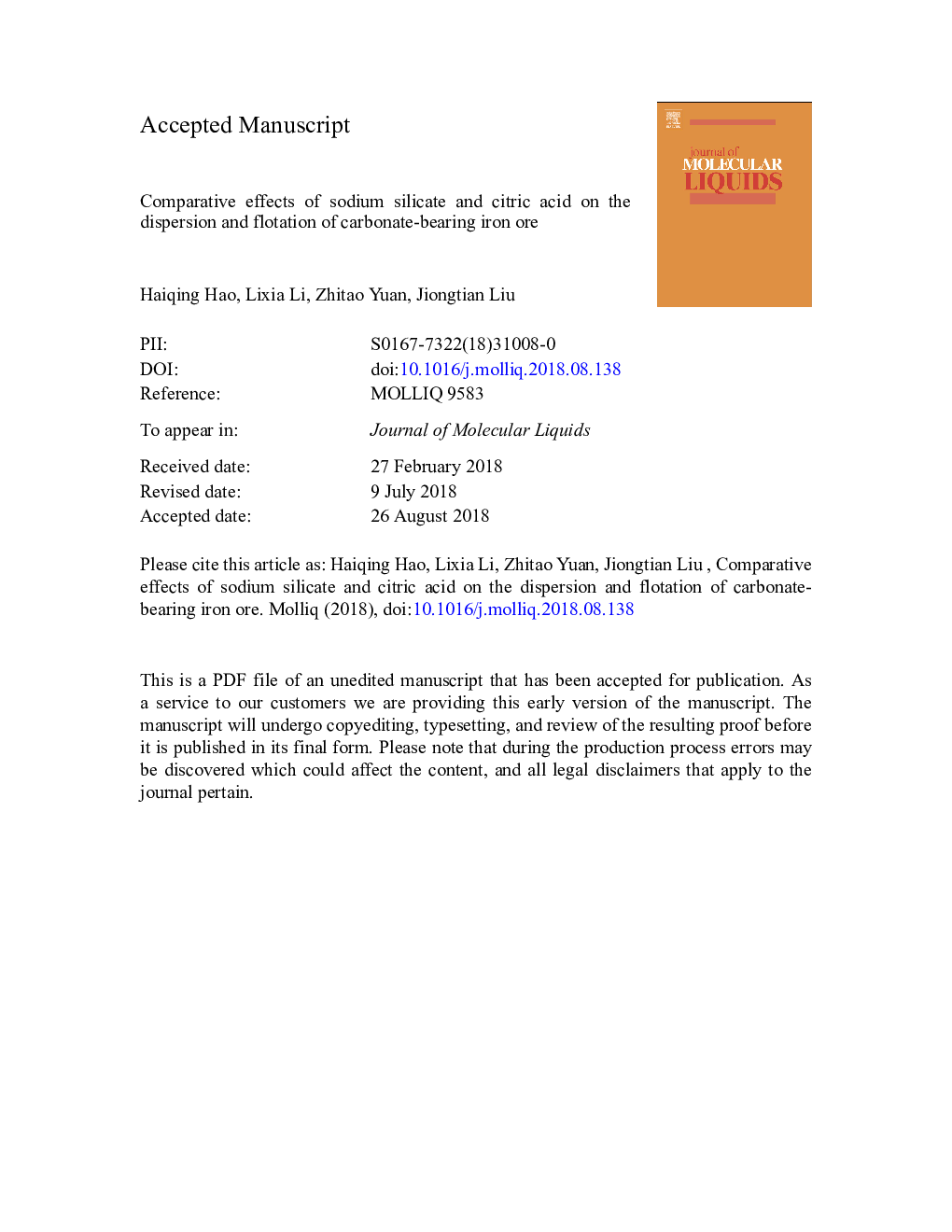| Article ID | Journal | Published Year | Pages | File Type |
|---|---|---|---|---|
| 8955298 | Journal of Molecular Liquids | 2018 | 20 Pages |
Abstract
In the first stage of the stepped flotation, micro-fine siderite was recovered to eliminate its adverse impact on the reverse flotation of hematite. To achieve the maximum recovery of siderite, the micro-fine siderite needed to be dispersed from the hematite and quartz surfaces. The comparative effects of sodium silicate (inorganic dispersant) and citric acid (organic dispersant) on dispersion and flotation were investigated. In the dispersion experiments, the optimum dispersion of micro-fine siderite was achieved using 200â¯mgâ
Lâ1 sodium silicate or 100â¯mgâ
Lâ1 citric acid. Analysis of the surface zeta potential indicated that the surface potentials of the minerals became more negative after the addition of the dispersants, which contributed to the dispersion of the minerals. The surface potentials of hematite and quartz were also more negative in the citric acid solution than in the sodium silicate solution, and thus the citric acid had a better dispersion effect than the sodium silicate. However, better flotation performance was achieved in the starchâsodium oleate flotation system with sodium silicate than that with citric acid. The FeO grade of the siderite concentrate was 13.91% with the addition of sodium silicate, whereas it was 11.93% with citric acid. The differences were further investigated by calculations based on the density functional theory. The calculated adsorption energies indicated that sodium silicate was able to adsorb on the minerals more stably than citric acid. The density of state and charge transfer showed that both dispersants were able to chemically adsorb on the hematite. However, hydrogen bonds only formed when sodium silicate adsorbed on hematite, which maintained the dispersion of siderite from the hematite. Therefore, sodium silicate is more suitable for dispersing micro-fine siderite from hematite and quartz in flotation.
Related Topics
Physical Sciences and Engineering
Chemistry
Physical and Theoretical Chemistry
Authors
Haiqing Hao, Lixia Li, Zhitao Yuan, Jiongtian Liu,
